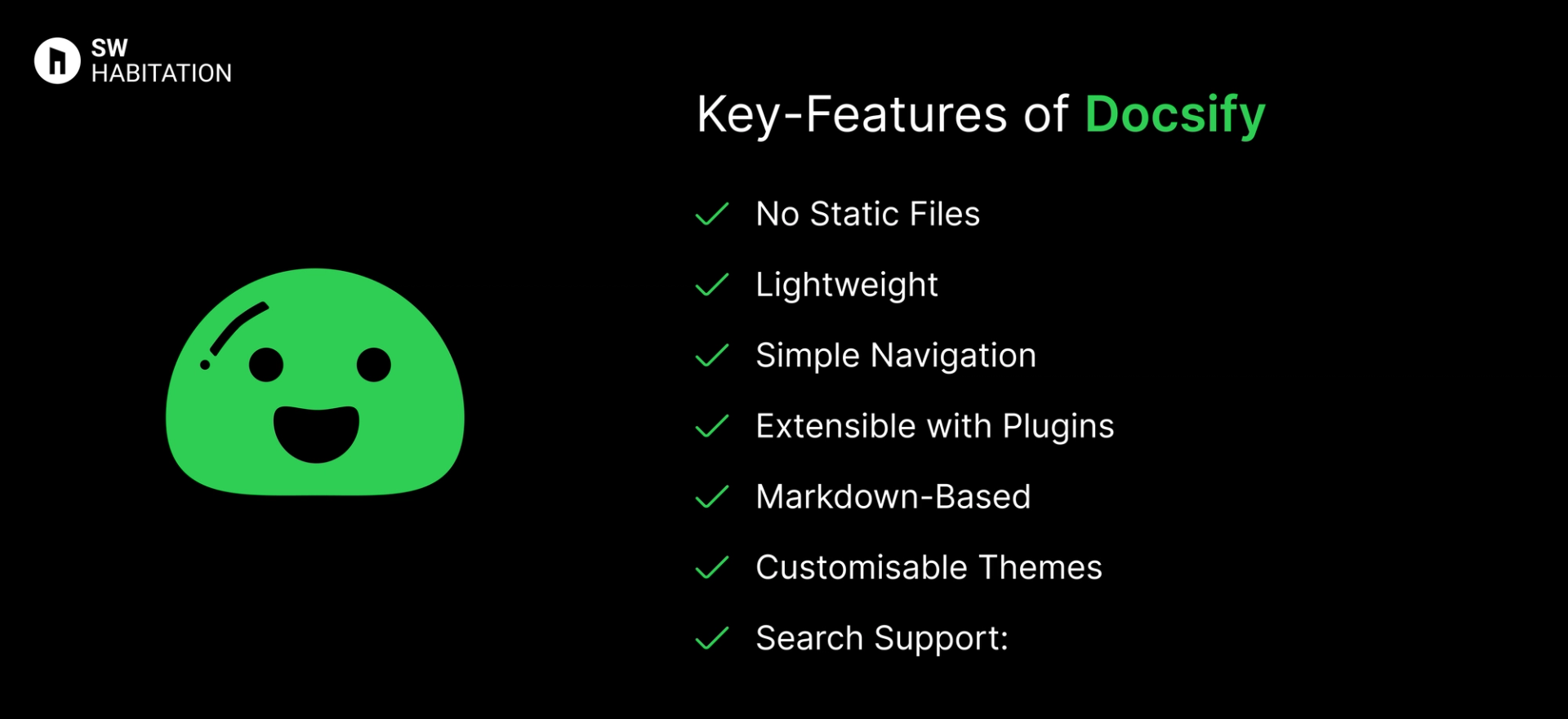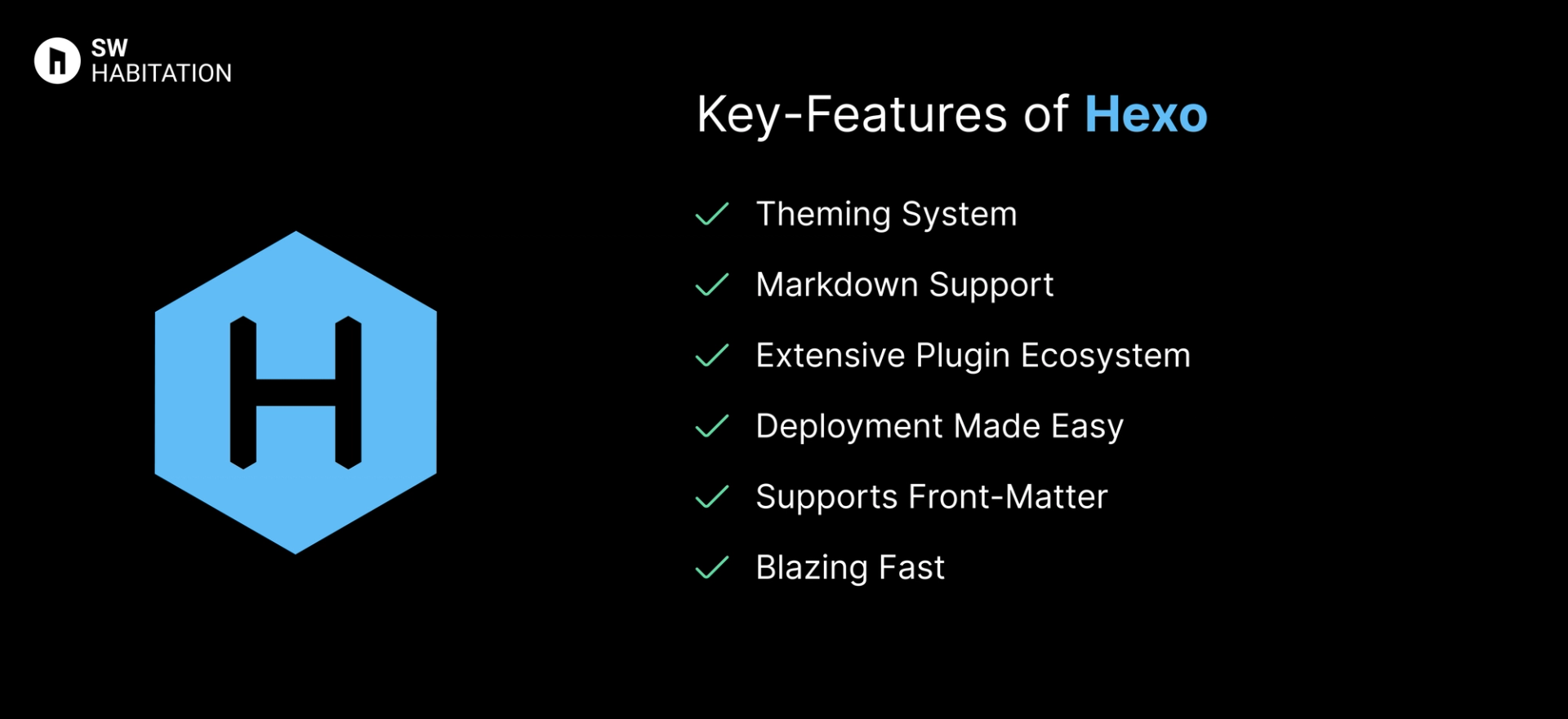Docsify vs. Hexo

Docsify

Hexo
So, you know when you want to build a website or app, but doing everything from scratch feels kinda overwhelming? That’s where web frameworks come in. They’re like a ready-made set of tools and building blocks that help you get things up and running way faster. Instead of figuring out every little piece yourself, a framework gives you a solid base to build on, and lets you focus on making something cool.
What is Docsify?
Docsify is a documentation site generator that works by rendering Markdown files in the browser.
Unlike traditional static site generators, docsify doesn’t pre-generate static HTML files. Instead, it loads and renders content dynamically using JavaScript. This makes it incredibly lightweight and super easy to maintain, no need to rebuild the site every time you make a change.
Key Features of Docsify


- No Static Files: No need to pre-generate pages it renders them dynamically.
- Lightweight: The core library is tiny its just a single JavaScript file.
- Simple Navigation: Automatically generates sidebars and navigation.
- Extensible with Plugins: Add features like pagination, copy-to-clipboard, or Google Analytics.
- Markdown-Based: Write your docs in Markdown for simplicity.
- Customisable Themes: Adjust the look and feel with ease.
- Search Support: Built-in search functionality.
Advantages of Docsify
- Great for Small Projects: Perfect for simple documentation sites or project wikis.
- Super Easy Setup: No build step needed just drop a few files into your project.
- Light and Fast: No bulky dependencies, just pure simplicity here.
- Instant Updates: Changes reflect instantly without rebuilding the site.
- Minimal Learning Curve: If you know Markdown, you’re already halfway there.
Disadvantages of Docsify
- JavaScript Dependency: Requires JavaScript to render content, so it won’t work well in environments where JavaScript is disabled.
- Limited Scalability: Best for smaller documentation projects.
- No Static Files: Not ideal for SEO, as content is rendered client-side.
What is Hexo?
Hexo is a Node.js powered static site generator that transforms Markdown files into static HTML pages. It’s particularly popular among bloggers and developers who love the simplicity of Markdown but also want a bit more control over the final website output as well.
Key Features of Hexo


- Theming System: Supports customizable themes for a personalized look.
- Markdown Support: Write your content in Markdown and let Hexo handle the rest.
- Extensive Plugin Ecosystem: Offers a range of plugins for SEO, analytics, and more.
- Deployment Made Easy: One-command deployment to platforms like GitHub Pages or Vercel.
- Supports Front-Matter: Add metadata like titles, tags, and categories to each post.
- Blazing Fast: Generates static files in seconds, even for large websites.
Advantages of Hexo
- Huge Plugin Library: Extend functionality effortlessly.
- Perfect for Blogs: Tailored to bloggers who want to focus on content.
- Minimal Setup: Simple installation and configuration.
- Speed: Lightning-fast build times.
- Markdown Focused: Keeps writing pure and distraction-free.
Disadvantages of Hexo
- Less Modern Than Some Alternatives: Lacks the modern features of frameworks like Next.js or Gatsby.
- Limited Dynamic Content: Not ideal for highly interactive sites.
- Node.js Required: Needs Node.js installed.
Comparison Between Docsify vs Hexo
Use Cases of Docsify
- No-Build Workflows: If you hate build steps, Docsify’s dynamic loading is a dream.
- Markdown Lovers: Write everything in Markdown and let Docsify handle the rest.
- Small Projects: Ideal for simple projects, personal wikis, or README-driven sites.
- Quick Documentation: Need a doc site in minutes? Docsify delivers.
Use Cases of Hexo
- Fast Deployments: Get your site online with a single command.
- Technical Documentation: Write clean, organized docs quickly.
- Blogging: Built with bloggers in mind, especially those who love Markdown.
- Developer Portfolios: Show off projects with minimal effort.
Other Resources
Conclusion
Web frameworks make building websites and apps a whole lot easier. Whether you’re working on a personal project or something big for work, they help with the heavy lifting—like routing, design structure, and how everything connects.
With support for things like server-side rendering, optimized performance, and developer-friendly features, these tools let you create faster, smarter, and cleaner websites. Just pick the one that fits your style, and start building something awesome 🚀
Frequently asked questions
Is Docsify beginner-friendly?
Absolutely, Docsify is designed to be simple and easy to set up plus its is ideal for anyone who needs to create documentation fast.
Can I customize Docsify?
Yes, Docsify is highly customizable with themes, plugins, and configuration options. You can tailor it to fit your branding or specific project needs.
Does Docsify require a static build?
Nup, Docsify generates your docs on-the-fly in the browser. Just write Markdown, and Docsify takes care of the rest.
Is Docsify good for small projects?
Yes, Docsify is excellent for creating quick documentation sites and smaller projects without the overhead of a static build process.
What’s Hexo good for?
Hexo is good for building fast blogs and simple static websites that need to be quickly set up and easily managed.
Is Hexo easy to set up?
Yup, Hexo has a straightforward setup process and is easy to get running with minimal configuration.
Does Hexo use Markdown?
Yup, Hexo uses Markdown files to create content, so it's developer-friendly and easy for content creators to manage.
Does Hexo support plugins?
Yup, Hexo has lots of plugins available to extend its functionality, whether it’s for SEO, performance, or content management.
